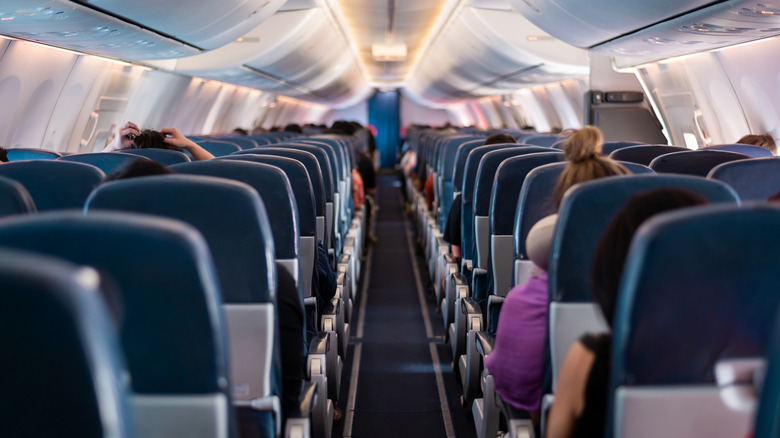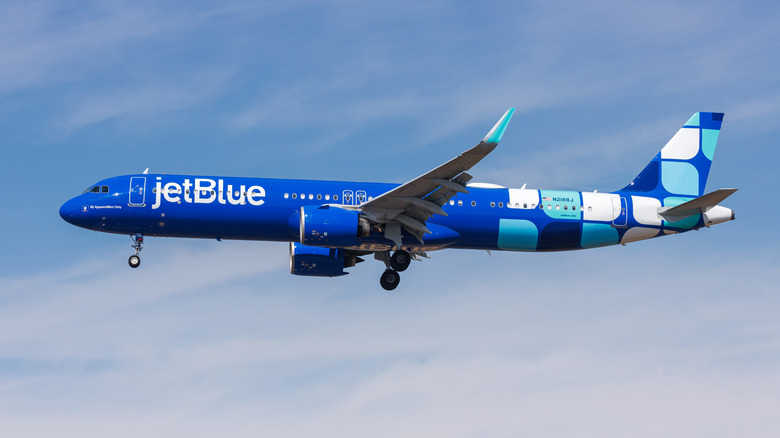Yes, Airplanes Have Cameras - Here's Where They're Usually Located
Depending on where you live and how you go about your life, much of it may be caught on camera (even if you're not a social media influencer). Cameras on the street, inside shopping malls and banks; traffic cameras at busy intersections; security cameras in government buildings and transportation hubs; even hidden cameras in street lights, all quietly picking up the daily minutiae of our lives. You likely expect and may have even spotted security cameras inside taxi cabs and rideshares, but one place you may not expect to find them is on an airplane – they may be unnoticed, but they are there.
Commercial and cargo planes tend to install cameras both inside and out. They are often found on the belly, tail, and near the landing gear on larger aircraft. Inside the plane, they can be found outside the cockpit door and also in bulkheads within the passenger cabin. Some planes even have cameras on the backs of seats within the in-flight entertainment systems.
Airline passengers shouldn't fret about privacy concerns, however. Even the cameras inside planes aren't present to snoop into your personal life, but rather for monitoring and investigative purposes. Pilots use the exterior cameras for navigation, but they can add a bit of fun to your flight as well. Passengers can often watch takeoff and landing via a live feed to their in-flight entertainment system.
Security cameras inside airplanes
If you're old enough to remember the terrorist attacks on September 11, 2001, and the aftermath, you probably won't be surprised to learn that the first cameras to surveil passengers were installed on passenger planes in 2002. A committee of airline executives and government officials made the recommendation, and while it never became law, JetBlue was the first to install cameras, with 19 additional airlines applying for permission to do so on domestic and international flights.
Inside the passenger cabin, flight attendants use bulkhead cameras to keep an eye on passengers when they can't physically do so, like during takeoff and landing, when they do not have a clear line of sight into all the passenger areas. These cameras allow them to ensure that everyone is still seated. Flight attendants don't typically need to access these cameras during the rest of the flight, but their presence can help provide clarity if there's been an onboard incident. While there have been instances of individuals hiding cameras in airplane lavatories, airlines are legally prohibited from monitoring bathrooms via security cameras.
Security cameras are often mounted just outside the cockpit as well. This allows those inside the cockpit to see who is outside the door without having to open it, maintaining a secure space. Pilots can easily identify who is requesting entry. During the attacks on September 11, terrorists got inside the cockpit to hijack several commercial flights. Along with reinforced cockpit doors, cameras add an extra layer of security.
Exterior cameras and privacy concerns
Many airlines also mount cameras on the exterior of their planes. These work much the same way as the backup camera on your car does — pilots use them to more easily move around airports to avoid incidents on the runway. Cameras installed on the body of an aircraft can help pilots when the taxiways are tight, and cameras on the tail and landing gear are especially helpful on larger aircraft like the massive Airbus 380, giving pilots lines of sight they don't otherwise have.
While these exterior cameras are purely for navigation and safety, passengers can sometimes enjoy the view during takeoff and landing through their entertainment system screens. Once the plane is in the air, however, the exterior cameras are not used and wouldn't provide much of a view anyway.
Unsurprisingly, some have raised privacy concerns about the use of in-flight cameras, especially those embedded in the backs of seats. In 2019, two U.S. Senators proposed a bill to stop the use of entertainment systems with built-in cameras and asked for clarification on how the cameras are used. The bill never gained traction, but that same year, United, Delta, and American Airlines added covers to their seatback cameras, and many airlines maintain that these cameras are always disabled.


